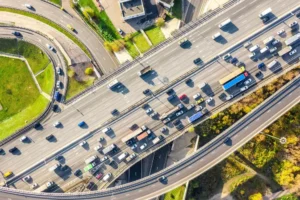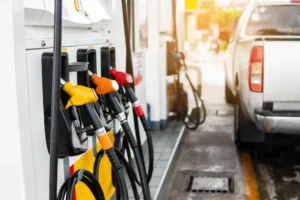India's New Climate Targets
“India’s climate targets are praiseworthy and serve as a powerful call to action, challenging the world to follow suit.”
In Brief
- India’s ambitious climate targets, including a goal of achieving Net Zero emissions by 2070, highlight its commitment to combating climate change and leading the global fight against pollution and greenhouse gas emissions.
- To achieve these targets, India aims to significantly increase its non-fossil fuel energy capacity, meet 50% of its energy requirements from renewable sources, reduce projected carbon emissions by 1 billion tonnes, and improve carbon intensity by 45% by 2030, while also addressing challenges such as grid stability and the need for cleaner coal technologies.
- Through comprehensive solutions such as cleaner coal technologies and the adoption of poly-generation systems, India can foster sustainable development and reduce its carbon footprint.
India is a country with a growing economy and a rapidly expanding population. This growth has come at a cost, however, as India is now one of the most polluted countries in the world. In 2019, air pollution caused an estimated 23 lakh premature deaths in India, the highest in the world. Additionally, India stands as a significant emitter of carbon dioxide, and its emissions are projected to escalate in the upcoming years. Balancing economic expansion with environmental preservation poses a formidable challenge for the nation.
In 2020, during the peak of the pandemic, as transportation came to a standstill and industries halted operations, a remarkable transformation occurred. The once-polluted skies above cities like Delhi transformed into a mesmerizing azure blue, and the air became unusually fresh and clean. As air pollution plummeted to levels unseen in living memory, people shared pictures of spotless skies and even Himalayan peaks from cities where the view had been obscured by fog for decades. This momentary respite served as a stark reminder of the environmental challenges India faces and the urgent need to address them. As the world witnessed the restorative power of reduced human activity, it became evident that achieving sustainable development and mitigating pollution and emissions should be at the forefront of India’s agenda.
INDIA’S NEW CLIMATE TARGETS: BOLD, AMBITIOUS, AND A CHALLENGE FOR THE WORLD
India’s commitment to achieving Net Zero emissions by 2070 is not just a pledge, but a determined sprint towards addressing the global climate crisis. Prime Minister Narendra Modi’s five-fold strategy, known as the panchamrita, unveiled at the 26th Conference of Parties (CoP26), sets the stage for India to become a leader in the fight against climate change.
Breaking Down India’s Ambitious Targets:
- 500 GW of non-fossil fuel energy capacity by 2030:
- Meeting 50% of energy requirements from renewable sources:
- Reducing projected carbon emissions by 1 billion tonnes (Gt) from 2021-2030:
- 45% reduction in carbon intensity by 2030:
- Net Zero emissions by 2070:
CHALLENGES AND SOLUTIONS:
India’s climate targets are praiseworthy and serve as a powerful call to action. However, there are a few challenges that lie ahead for India to achieve its goals.
The present thermal power plants operating in India are subcritical plants, and their average efficiency has never exceeded 30%. The supercritical power plants in India operate at 40% energy efficiency. Additionally, the implementation of supercritical power plants with oxy-fuel combustion and CO2 sequestration can improve the Energy Efficiency Factor (EEF) to 45%. India’s current power generation capacity stands at 346.61 GW, with a significant addition of solar power. This poses a challenge to grid stability. To address this, a study by the Central Electricity Authority (CEA) has identified 200 potential sites for setting up large thermal power plants with a total capacity of 428.9 GW, surpassing the existing installed capacity of 346.61 GW.
The promotion of solar and wind power would increase the solar-wind mix from 9% to 30%, but it may create grid stability issues. Therefore, the addition of cleaner coal technology becomes imperative to ensure power system stability and reduce CO2 emissions. India, being the third-largest emitter of greenhouse gases (GHGs) globally, must prioritize cleaner coal technologies. In the long term, a sustainable solution lies in adopting a poly-generation mode, where coal/lignite is utilized for power generation, and the resulting CO2 emissions are used to produce a clean fuel known as Dimethyl Ether (DME). This approach becomes crucial as global reserves of petroleum and natural gas are expected to be depleted within approximately 50 years, while coal/lignite reserves can last for centuries. DME presents a cleaner alternative fuel, making it the silver bullet solution to address this paradox.
Achieving India’s ambitious targets will require a massive transformation of the country’s energy systems. Balancing economic growth and development while reducing pollution will be crucial. The transition must prioritize equity, ensuring access to affordable and clean energy for all, particularly the underprivileged. By implementing innovative technologies, investing in research and development, and fostering collaboration between industries and policymakers, India can overcome these challenges and forge a sustainable path towards a cleaner and greener future.
In conclusion, India’s climate targets are commendable, but they necessitate proactive measures to overcome obstacles. Through comprehensive solutions such as cleaner coal technologies and the adoption of poly-generation systems, India can foster sustainable development and reduce its carbon footprint. Furthermore, ensuring equitable access to clean energy will be vital to uplift all segments of society and create a more inclusive and sustainable future.


